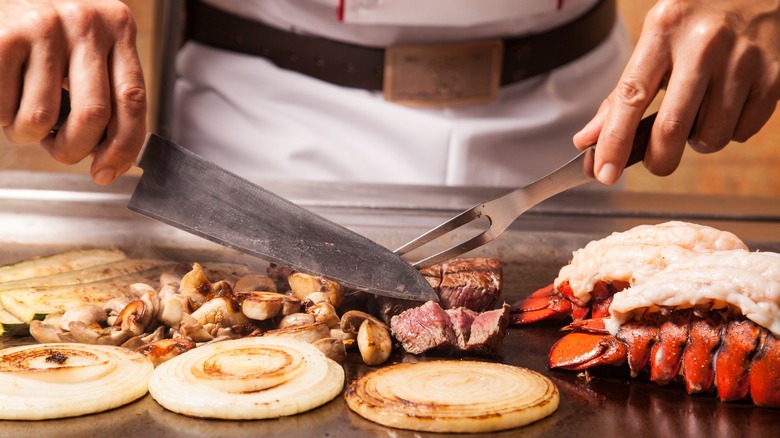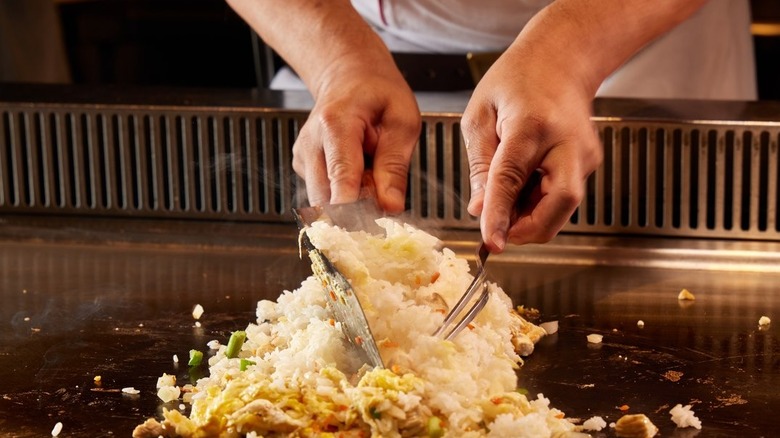The Secret Ingredient In Benihana's Fried Rice
Celebrities like Paul McCartney and Tracy Jordan love it (via GrubStreet); it's featured in "The Wolf of Wall Street" and "Mad Men;" its founder was a Japanese wrestler (via Thrillist) — it's Benihana, the classic teppanyaki grill where humorous chefs give you dinner and a show right in front of you. And beyond the infamous egg tricks and onion volcanoes Benihana chefs are trained on, diners can't get enough of the chain's fried rice.
Part of the reason Benihana's chicken fried rice is so good is a pair of ingredients that make just about anything better: butter and garlic, which coat the meat after it's sauteed and before it's combined with the rice and vegetables (via PopSugar). And they're not shy on the butter. One online copycat recipe for the chain's fried rice calls for a whole stick of softened butter mixed with garlic, lemon juice, and a little soy sauce (via Insanely Good Recipes).
But there's another secret ingredient Benihana uses in their famous fried rice: Safflower oil. And it's not just because the Japanese word for the flower inspired the name of the restaurant (via Benihana). Although it doesn't add as much flavor on its own as butter and garlic, safflower oil is another part of the reason Benihana's fried rice is so flavorful.
Why is safflower oil such a game-changer at Benihana?
In addition to being Benihana's symbolic logo (via The Ringer), safflower is crucial to the chain's fried rice. Safflower oil has a particularly high smoke point: Between 440 and 520 degrees Fahrenheit, per MasterClass. This is higher than many other oils, including olive — part of the reason you might not want to fry foods with your favorite extra virgin olive oil.
Why does this matter? Oils that haven't been refined and filtered contain plenty of minerals, enzymes, and compounds that lend them bold flavors and colors — but their smoke point is often relatively low, per Serious Eats. When they're heated past this temperature, not only do they begin to char, but fats also break down and give the food burnt, acrid flavors. However, oils like safflower, which are commonly refined, no longer have these flavorful compounds and can be heated to much higher temperatures (via VeryWell Fit).
Teppanyaki chefs at Benihana can therefore work with much higher temperatures to achieve crispier sears and more concentrated flavors. And if you find safflower oil, you can replicate this at home, too: Cook your fried rice on high heat to simulate the blazing woks and griddles, and let the rice crisp up a little before plating, per IzzyCooking.

